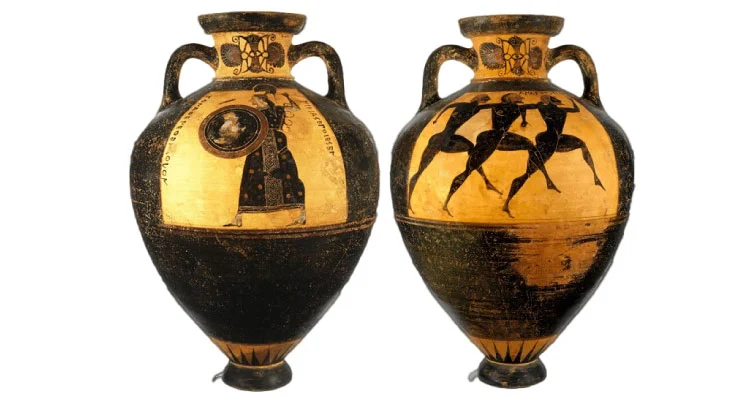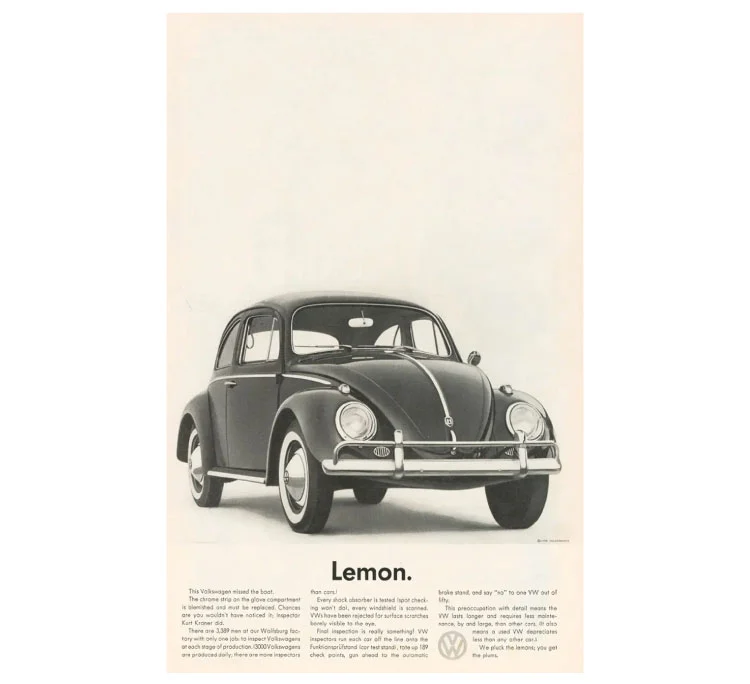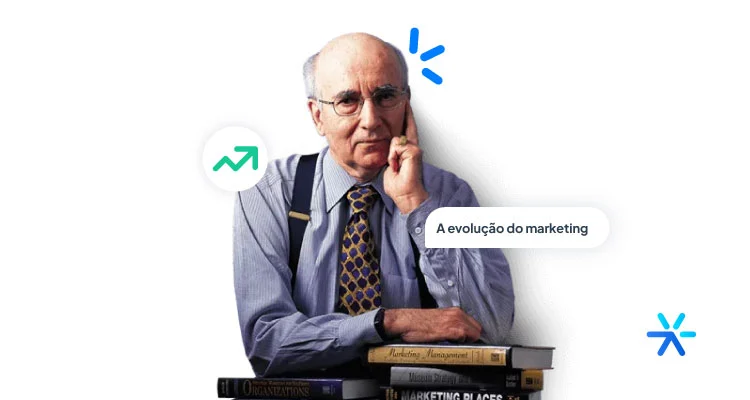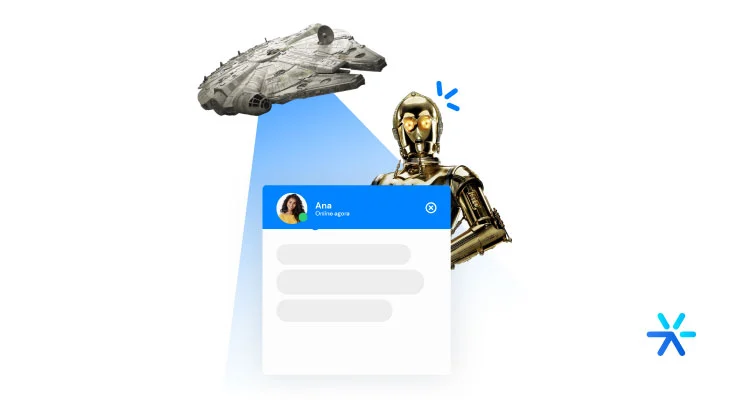The evolution of marketing: from Mesopotamia to Philip Kotler
The evolution of marketing did not begin in the last 100 years. To understand what he really is and where he is going, we need to go back to the beginnings of humanity.
Where there were businesses, there was advertising and marketing. Of course, not as we know it today: data-driven , with a focus on performance and return on investment. But traders have been trying to expand their sales with advertisements for as long as the world has been around.
Today we are going to take a journey through the tide of time 🌊. Our goal is to understand how marketing evolved, where it began, who helped build contemporary marketing and where it is going.
Let’s start?
The beginnings of marketing and merchandising
When the first person decided to sell his crop surplus to others, the seed of marketing began to sprout.
And since then, as much has changed in the world, much has also changed in marketing.
We are fortunate to have records of the world’s first marketing-related efforts, as well as the first retail-related communications, available in the palm of our hands.
We can see the evolution of marketing from a front row seat.
This topic will look from the earliest Acadian retail records we know of, to the beginning of the great pre-internet era of TV commercials.
Let’s go there?
Marketing in antiquity
Historian Eric H. Shaw highlights that the first practices that can be considered marketing began with the creation and rudimentary trade of sculptures, a good 40,000 years ago.
Everything is clear, without records: we only find the sculptures themselves and infer their trade.
But the first concrete record of retail-related communication comes from Mesopotamia , more specifically in the ancient city of Ur in mid-4,000 BC .
The communication is a clay tablet with cuneiform writing of a consumer complaining to his salesperson about the quality of the product being sold.

The oldest example of merchandising we have comes from ancient Greece, between 600 BC and 700 BC. Vases made by artisans came with their signature as a way of highlighting their prestige – and possibly increasing their price.
One of the vases from the time even comes with the inscription “one of the prizes of Athens”, meaning that it was one of the prizes of the city’s Panathenaic games.

Another great example is the Romans. With the eruption of Mount Vesuvius, the cities of Pompeii and Herculaneum were covered in ash, which preserved their characteristics.
Archaeological excavations found, on the walls, what historians believe to be the first announcements made in public places. They are the first billboards in the world, dating back to 79 BC .

But the first actual advertisement, designed to be a dedicated media advertisement, was made between 960 AD and 1260 AD, in Song Dynasty China. The Liu family’s needle business advertised making “High-quality Needles, Ready for Home Use” on a bronze plaque.

That’s where marketing came from – from the spirit of commerce, inherent in the human being. But we have a long way to go to where we are today, which was only studied in the 19th century.
And speaking of which:
The first announcements and the first theories
Marketing as we know it today had its origins with the industrial revolutions. With the advancement of capitalism based on the economy of mass production, the evolution of marketing began to happen more quickly.
In approximately 1455, Johannes Gutemberg invented the movable type press , which enabled the creation of the first periodical newspapers throughout the 16th and 17th centuries.
The world’s first weekly publication appeared in the mid-1620s in Great Britain , and the first daily newspaper began publication in 1702. At this time and throughout the 19th century, advertisements focused mainly on the sale of books and medicines.
At the end of the 19th century, the first advertising agencies began to appear in the USA and Great Britain. In Philadelphia, Volney B. Palmer opened the first American marketing agency.
But agencies back then were very different. They bought all available newspaper space in the region and resold them at a higher price. Making the announcement was the responsibility of the brands themselves.
This began to change with the turn of the century. The era of creativity in 20th century marketing was beginning.
Claude C. Hopkins and Scientific Advertising
Claude C. Hopkins was one of the fathers of advertising. Starting his career at the end of the 19th century and beginning of the 20th century, he helped to consolidate brands that are still in operation today – this is the case of Palmolive and Goodyear , for example.
Hopkins was one of the first, if not the first, to talk about marketing as a scientific discipline.
His precepts were immortalized in the book “The Science of Advertising” , published in 1923. In this book, Hopkins determines the embryo that guided the evolution of marketing: the need to know your target audience.
The idea that marketing needs to be targeted and present creative characteristics depending on the profile of the reader was not popular at the time. And marketing as we know it today – a holistic combination of merchandising, advertising and publicity – was not practiced.
Hopkins was considered a black sheep among advertisers at the time simply for running promotions and offering free samples. For them, this was not advertising.

The golden age of marketing and copywriting
The evolution of marketing had its classic era between the 40s and 70s of the last century.
Between these years, the largest marketing agencies in the world (to this day!) were created: Ogilvy & Mather (today Ogilvy), BBDO (which is also the holding company of the Brazilian Almap), DDB among others.

During this period, large campaigns were designed and the focus of the advertisements — made mainly in magazines and newspapers — was on creativity, information and adapting the message to the public.
The foundations laid by Hopkins bore great fruit. David Ogilvy, one of his greatest admirers, as well as Ned Doyle and Bill Bernbach, pressured the market to understand copywriting as an art form inspired by market research.
The influences of this golden age of advertising are still seen today. Its main precepts are still applied, and its main names are still studied.
The evolution of marketing according to Philip Kotler

Philip Kotler was born in 1931, just before the golden age of traditional marketing began.
As he worked in agencies and companies throughout the 20th century, he determined the creation and formalization of marketing management — marketing management.
This principle was crucial in the evolution of marketing. Through Kotler, marketing was once again united with commercial intelligence practices .
It was this union that inaugurated the formalization of contemporary marketing theories , and established the study of marketing as a human science, guided by administration.
In his more than 80 published books, Kotler’s two main contributions were the creation of the marketing mix — the 4 Ps — and the marketing concepts 1.0, 2.0, 3.0, 4.0 and 5.0.
Today, analyzing the evolution of marketing goes through these 5 categories, which also describe the history very well. Shall we know more about each of them?
Marketing 1.0
According to Kotler, marketing 1.0 is the first phase of modern marketing, which took place at the beginning of the 20th century.
At that time the focus was all on the products . With the second industrial revolution creating factories and more factories, marketing had as its main focus the delivery of products from the production line to consumers.
With the reduced number of factories and the very high demand from consumers in large cities, this work rarely involved very complex advertising. It was in this context that the 4 Ps emerged – place, product, price and promotion.
Marketing 1.0 concerns were related to reducing production and distribution costs.
A great example is automobile marketing. The revolution at the time was not the advertising of the best car models, but rather the mass production of the Ford Model-T, which gained market share through the introduction of the Fordist assembly line.
Marketing 2.0
During the mid-20th century until the 1980s, consumer-oriented marketing was the dominant mindset.
This is the era that the text mentions above, with the prominence of great figures such as Claude C. Hopkins and David Ogilvy. The thinking at the time was simple: we need to understand how consumers think.
At this time, according to Kotler, the development of the STP framework – segmentation, targeting, positioning – took place .
What do consumers feel? Who are they? Where are they? Why do they buy?
All of this, before marketing 2.0, was guided by instinct, often from the manufacturers themselves — the owners of the industries and even the engineers who designed the product.
With the emergence of large agencies, many of which dominate the global market to this day, the creation of campaigns became more focused on the needs of consumers, who now had a much greater demand than demand.
Marketing 3.0
The evolution of marketing did not stop with the focus on consumers, but it also did not leave them behind.
From the beginning of marketing 2.0 to today, the focus on consumers is still very present and active.
Marketing 3.0 is about globalization. Instead of local markets, industries start to deal with the entire world.
The evolution of marketing 3.0 is also marked by the creation and popularization of the internet and social networks. At that time, brands began to humanize themselves, and focus on more than just the right products according to what consumers wanted.
Kotler determines the 3 Is framework for brands , which had a strong focus on their human identity — their branding .
The 3 Is are Identity, Integrity and Image. Within this framework, the main needs of brands within these concepts become positioning, differentiation and the brand as a real entity, with its own values.
Marketing 4.0
The evolution of marketing together with the internet brought about the world we live in today, with the predominance of digital marketing.
Kotler understands Marketing 4.0 as the era of integration: traditional marketing working together with digital marketing to put more and more people in contact with your brand.
Concepts such as omnichannel and user experience (especially for non-tangible products, such as SaaS platforms) have and are still marking marketing 4.0, which mixes a little bit of all eras so far.
But what about the future? What will Marketing 5.0 look like? Has it already started?
Marketing 5.0
In 2021, Kotler inaugurated the concept of Marketing 5.0 in his book of the same name, co-authored with Hermawan Kartajaya and Iwan Setiawan.
The term 5.0 was inspired by Society 5.0, presented by the Japanese government in this manifesto.
The idea of Marketing 5.0 is to transcend products and understand marketing as something fundamental to people’s lives.
We are living in an era of great transformations in society. And all these transformations are happening with a great influence from marketing.
To make it clearer: the main tools that provide Society 5.0 are products created by companies. In this context, products are no longer opportunities for sales and that’s it. They are part of our social understanding.
For example: Artificial Intelligence created along the lines of NLP – Natural Language Processing. It is a product , but at the same time, it has impacts on other people’s work and on the production and promotion of other products.
The big challenge of Marketing 5.0 will be — or has been — the integration of these products into our lives. And the evolution of marketing is becoming increasingly accelerated as we advance towards this goal.
A little more about this in the next topic:
The evolution of marketing in the content era

Content marketing is one of the best examples of the transition from Marketing 4.0 to Marketing 5.0.
Content is the practical way in which marketing can transform people’s lives and society as a whole. It’s the way he’s been doing it.
A quick example before we go into details: this text you are reading. It is part of an advertising effort. It was created with marketing goals in mind.
But at the same time, it is constructed in an interesting way, with the intention of sharing practical knowledge that you can apply in your life.
Here I’m talking about the evolution of marketing and offering you dozens of points where you can deepen your research and become more immersed in the topic.
Strategies would be very different in 1967, for example, at the height of Marketing 2.0. The objective of this text is not just to generate leads that will generate sales. It’s changing your conception of the world. Open up new opportunities for you.
And this change in thinking happened thanks to the advent of Inbound Marketing:
Inbound Marketing
The birth of Inbound took place at the beginning of the second decade of the 2000s. The term was created by Dharmesh Shah, one of the founders of HubSpot, the company that popularized the term.
The main philosophy of Inbound Marketing is the use of non-interruptive marketing tactics — from which Content Marketing draws its main inspiration.
Even at the height of Marketing 2.0, content had its place in ad writing. David Ogilvy himself said that ads needed to look more like the articles in the publications where they were being published.
Inbound seeks to expand this idea. Instead of showing ads where consumers are, it creates a marketing infrastructure for consumers to look for the brand.
One of the main forms this infrastructure takes is through SEO in conjunction with Content Marketing. More on this below 👇
Content marketing and SEO
The hallmark of the evolution of marketing in the times we live in today is the union of Content Marketing with search engine optimization techniques — SEO.
Content Marketing emerged in Marketing 3.0, with branding concepts becoming increasingly stronger and due to the need to humanize brands.
Arousing more than just the desire to buy, but also interest in brands, requires constant content.
SEO is part of building the infrastructure I mentioned above. People use Google to answer their questions. Marketing takes responsibility for delivering answers to your questions.
Social networks as a marketing tool
From Marketing 3.0 onwards, the focus on relationships between consumers and brands is becoming increasingly stronger.
Social networks are a fundamental part of this. Brands want to be part of the shared environment of ideas of the modern mentality.
As marketing advances, more and more brands are placing themselves on social media and creating new positions.
Today, the brand that stands out on social networks is the one that exposes its values , the one that behaves in the same way that consumers interact with the networks.
But it’s good to realize that social media is a tool. The ideology they helped to build will continue to exist for many, many years.
For the future, brands will continue to create this proximity with consumers. They will be part of their communities. They will create these communities.
Engineering-as-marketing
Nowadays, more and more brands are investing in creating products to make life easier for their potential consumers.
This is called engineering-as-marketing. We even apply this concept. Our lead calculator , for example, is a free resource that helps in the daily lives of those who work in marketing.
The concept is exactly this: the creation of tools that impact the work or lives of potential customers.
Contemporary marketing and marketing of the future revolve around keeping your brand relevant in the lives of your target audience. The time for propaganda is passing. Today, our goal is to accompany you throughout your life.
The future of marketing awaits us!
But to know where to go, we need to know where we are. This is one of the teachings from the classic era of marketing 2.0 that will never stop being true.
But where to start searching? In the past, you needed to hire specialized companies to do this work. Make calls, knock on doors.
Today, the story is different. We carry out our own studies and share them. It’s part of our contribution to the evolution of marketing — and to the marketing of the future.
Keep reading and keep on your research:








